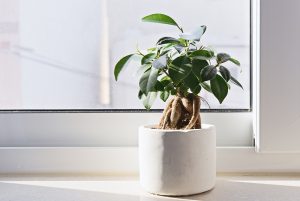Air pollution isn’t often associated with indoor air. Vehicle exhaust, combustion of fossil fuels, dust and dirt from agriculture and construction — these are some of the causes of outdoor air pollution that we’re so used to hearing about. While outdoor air pollution is harmful, however, the EPA says indoor air pollution levels are often 2-5 times higher than outdoor level. This is a conservative number because in some instances, indoor air pollutant levels can exceed levels of the same outdoor air pollutants at a level 100 times higher. This means the air inside your home or workplace can be more toxic to you than the air outdoors. Continue reading and learn how this happens.
 Radon Gas
Radon Gas
Radon occurs naturally outdoors and is produced when uranium breaks down in soil and rocks. Radon levels outdoors are harmless. Inside your home, radon gas can expose your lungs to small amounts of radiation. Breathing in radon gas for many years can damage cells in the lung’s lining and increase a person’s risk of developing lung cancer. While the risk of lung cancer from radon isn’t as high as the risk for cancer associated with smoking, combining the two does create a greater cancer risk. Radon gas gets into a building through cracks in the foundation. Levels are usually highest in the basement or crawl space.
Cleaning Supplies
Most people use a variety of cleaning products to ensure they have a clean smelling home. It’s the chemicals in the cleaning products that make your home smell fresh. Those chemicals can irritate your lungs. If you’re an elderly person, suffer from chronic illness, or have asthma, cleaning products may contribute to poor health. You may notice an increase in headaches, respiratory problems, and even skin rashes. The best way to have a clean smell in your home is to open the windows and let things air out naturally.
Volatile Organic Compounds

Cigarette Smoke
Another common indoor air pollutant comes from cigarette smoke. Called environmental tobacco smoke, this includes smoke exhaled by the smoker, and what comes from the actual smoking product. The cigarette, cigar, or pipe emits side smoke. Both pollute indoor air. When you consider that indoor air doesn’t get filtered as quickly as air outside, it’s not hard to see how cigarette smoke can create a more toxic environment inside a home or building. Environmental tobacco smoke contains high levels of particulate matter (PM). PM is also called particle pollution and is a mixture of solid particles and liquid droplets. High PM levels indoors may result in health issues. Households where people smoke have a higher PM level than those that are smoke-free.
You can reduce indoor air pollution by paying attention to the cleaning supplies you use, being aware of products with VOCs, and not smoking indoors. Even so, one of the biggest sources of indoor air pollution is cooking. If your stove doesn’t have a good ventilation system, instead of pushing cooking fumes outside, they remain indoors where you breath them in.
Contact Cox Air today if you’d like more information about how you can maintain healthy indoor air quality.





Leave a Reply